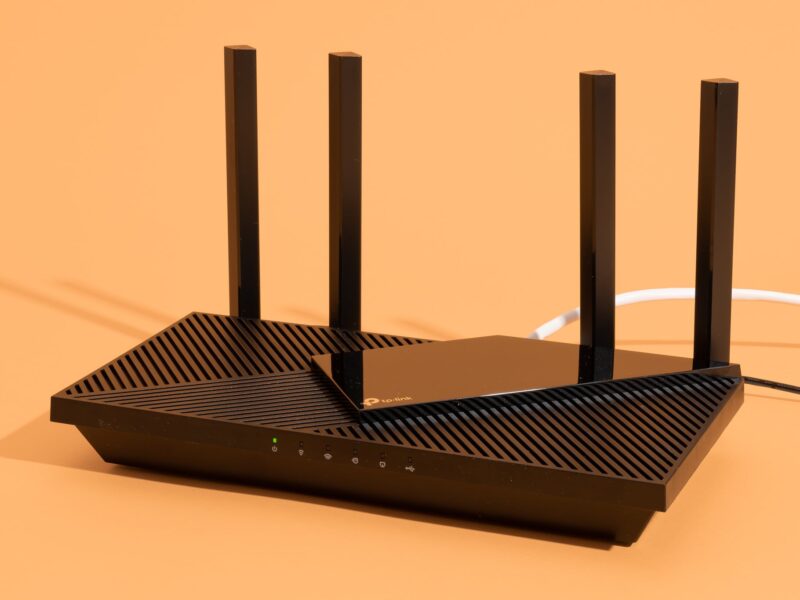How To Setup TP-Link Extender. If you want Internet access at your home or workplace, you’ll almost certainly have to set up a network of some sort. For example, you may utilize the same network connection for all of your devices, ranging from laptop computers to mobile phones to printers and scanners. A router, a unit that connects to your cable modem or satellite modem and distributes Internet services across the region, both wirelessly and via Ethernet cables, is the most common method of accomplishing this goal. Many service providers merge the router and modem into a single box, although this will make no difference to users.
Wireless Range – Theory and Practice
The fact that radio waves, which are used to communicate by WiFi networks, propagate very well through open air but are much less effective when asked to propagate through solid objects, such as walls or doors, is a problem that frequently arises during wireless network installation and is one of the most common issues that arises. Radio waves can pass through such barriers, but the effort required to do so consumes a significant portion of their power. For example, you might discover that a piece of wireless equipment has a nominal range of 600 feet. This is merely one example. And if you put that equipment outside, in nice weather, in a big wide field, with nothing in between the two network components, you’d find that they’d work fine even if they were 600 feet apart. This is due to the fact that there would be nothing to interfere with the signal.
Try doing the same thing inside a house full of walls, freezers, entrances, and staircases. It’s possible that your network will be unable to reach anything more than 60 feet away, which is only 10% of the nominal range. Weak WiFi is an annoyance that can have a variety of root causes. It can be especially difficult to deal with. You could have a router that simply does not broadcast with enough strength to reach all of your home’s nooks and crannies, or there could be obstructions in the signal’s path. Both of these things could be the source of the issue. In general, obstacles are things like unusually thick walls or floors, but other common household items can and do cause signal issues. I once wasted four hours attempting to figure out why a wireless router couldn’t reach several nearby rooms in my house before realizing that I was directing the signal directly through a home gym setup that included approximately 500 pounds of cast iron directly in the signal path. The wireless router was able to reach the rooms in my house after I realized this.
If you have a large house or office, or if you want to extend your Internet connection to a facility in your backyards, such as a shed, garage, or patio area, a wireless network extender may be the answer. TP-Link is a networking company that manufactures a wide range of networking equipment, including whole-home wireless routers, range extenders, modems, and switches. For the purposes of this article, we will concentrate on their range extenders. Despite the fact that range extenders are typically inexpensive and perform admirably, mastering home networking may prove difficult. This post will explain how range extenders work, why you might need one (or more), and how to configure the TP Link extender model. You will also discover why you might require a range extender.
How do Range Extenders work?
Wireless network extenders work by receiving and rebroadcasting WiFi signals from your wireless router in order to increase signal strength in previously forbidden areas. Antenna-based extenders, which add another broadcasting node to your network, and power-line extenders, which use your home’s electrical system as a wired network to send wireless signals across (or through) barriers, are the two types of extenders.
Consider the following typical housing layout: The router is located in the living room. The layout depicts areas with strong signals, good signals, weak signals, and no signals. (Please keep in mind that this is a simplified example; in reality, a house of this size could be covered by a single router, but I don’t want to take up too much space on your screen with a large house floor plan.)
Also Read: How To Connect Hotspot With Laptop
How To Setup TP Link extender?
To begin, connect the TP-Link extender to your computer using an Ethernet wire. This is so that we can program the wifi settings into it and connect it.
- Connect your TP-Link extension to a power outlet.
- Use an Ethernet wire to connect it to your computer.
- Navigate to http://tplinkrepeater.net using your computer’s browser. If that fails, try http://192.168.0.254. A TP-Link web page should display.
- Choose Quick Setup and then Next.
- Next, select your area.
- Allow the TP-Link extender to search for available wireless networks. It might take a minute or two, depending on how many networks are nearby.
- Select Next after selecting your wireless network from the list.
- When asked, enter the wifi password.
- If you want a single bigger wireless network, choose ‘Copy from the main router,’ otherwise choose ‘Customize.’
- Next should be selected.
- In the last window, review the network settings and click Finish if everything is in order.
The TP-Link extender will reboot and, hopefully, connect to the internet. Test it first with an Ethernet cable and then without it using wifi. Depending on the model, there may be a light on the front that indicates whether or not your TP-Link extender is connected to the network. Keep an eye on it to see if it can maintain a connection.
Configure TP-Link extender with WPS button
You can also use the WPS button on your router to configure everything. WPS stands for WiFi Protected Setup, and it allows you to automatically and safely configure networks. The button is a physical button that is usually located on the back of a router and is labeled WPS.
Some TP-Link extenders include WPS buttons that can be used to configure them.
- Connect the TP-Link extender to a power outlet near your wireless router.
- On the back of the router, press the WPS button. A WPS LED should begin to blink. If it does not, press it again.
- On the TP-Link extender, press the WPS button. The WPS light should also blink here. If it doesn’t, press it again.
WPS eliminates the need to manually configure your TP-Link extender’s settings. By pressing the WPS button, you instruct the router to connect to a device that has also enabled WiFi Protected Setup. To add a layer of security, the router will only accept connections for two minutes.
WPS can be hit or miss, which is why I didn’t recommend it as a first step. If the wireless network cannot be detected, restart both devices and try again. If that doesn’t work, try manually configuring it as described above.
You should have a fast connection from every room in the house if you follow the basic procedure for configuring your TP-Link extender. If you’re not getting the desired results, move the extender around until you find the one that works best.





